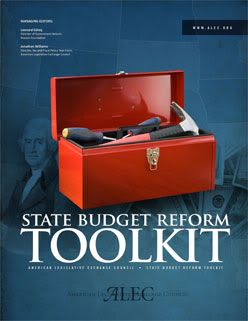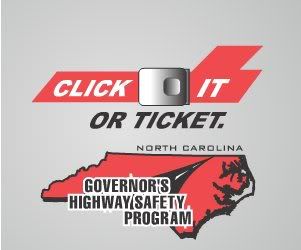RALEIGH – The following are highlights from this week at the N.C. Department of Transportation. The stories below are also featured in NCDOT Now, the department's weekly newscast.
Safety City
The arrival of fall means one thing in North Carolina… the state fair! As you enjoy turkey legs and everything deep fried, be sure to also check out the informative and potentially life-saving exhibits and helpful services that the Governor’s Highway Safety Program is offering at the fairgrounds.
In addition to having fun, state transportation officials want fairgoers to learn more about how they can help to decrease roadway injuries and fatalities. Visited by more than 100,000 people every year, the Safety City attraction is designed to teach and engage visitors on topics such as the dangers of impaired driving, speeding, railroad safety, plus seat belt and child passenger protection.
Another popular exhibit is the B.A.T. unit, or breath alcohol testing unit, which is equipped with a mobile lab and magistrate’s courtroom. These are used at checkpoints statewide to identify and remove impaired drivers from roadways.
“We're hoping visitors walk away with a little more awareness about the various things they can do to be safer not only on the roads, but also in areas like railways or when they are pedestrians,” says Mark Ezzell, Governor’s Highway Safety Program Director.
Be sure to stop by Safety City near gate 1.
NCDMV Mobile Unit
While at the fair, why not save yourself a trip to the driver license office by visiting the NCDMV mobile unit?
Located off the midway between the Jim Graham Building and Dorton Arena, fairgoers can pick up driver handbooks, learn how to renew their vehicle registration online and even apply for a NC Real ID for the first time if they have the necessary documents with them.
For more information about acceptable documents to bring, visit the NCDMV online at myncdmv.gov.
Hurricane Matthew Anniversary
One year after Hurricane Matthew displaced thousands of families and destroyed homes, NCDOT has made significant progress in getting eastern North Carolina back on its feet.
By spring of this year, the department had reopened all but 14 of the more than 660 roads that Hurricane Matthew damaged or destroyed.
One year after the storm, just two roads remain closed; each needs a new bridge and should reopen next year.
Animal Collisions Dramatically Increase as Temperatures Cool Down
Autumn in North Carolina is the time of the year when deer start showing up in greater numbers along the state’s roadways, which means the greater chance for a collision with vehicles.
The number of animal-vehicle collisions in North Carolina in 2016 was 17,901, just 136 fewer than the year before.
That put the total over the past three years at close to 54,000 collisions, a great majority being with deer. The N.C. Department of Transportation’s latest study on animal collisions shows those crashes killed 14 people, seriously injured 51 others, resulted in 3,356 overall injuries, and caused nearly $136 million in property damage.
“This time of year, it is especially important for all of us to watch for deer,” said Transportation Secretary Jim Trogdon.
For the 14th year in a row, Wake County led the state in the number of animal-related crashes with 730, which was a drop of more than 100 from 2015. But it was also 180 more crashes than the runner-up, Pitt County. And over the past three years, Wake County had over 730 more animal-related crashes than any other county. The high number is attributed to the increasing number of drivers and road mileage in the county, which still has considerable wooded acreage.
Guilford County had the third-highest figure at 549 crashes, followed by Duplin, Union, Mecklenburg, Columbus, Randolph, Brunswick, and Forsyth counties.
Counties in the far western part of the state have fewer drivers and roads, so they again had the lowest number of animal crashes. Graham County had just eight, while Swain County had 10.
Deer are on the roadways more during the fall into early winter due to the hunting and mating seasons. They also tend to travel more during times when it is tougher to see them, at dawn and at dusk. With the end of daylight savings time at 2 a.m. on Sunday, Nov. 5, it increases the chance of deer being by roadways when more drivers are on the road for the morning and afternoon commutes.
Traditionally, November records the highest number of animal-related crashes at nearly 22 percent of the annual total over the last three years, followed by October, December, and January.
The most crashes came in the evening between 5 p.m. and midnight, with 50 percent of the overall total. In addition to being the time when deer are more likely to be moving about and crossing roads, it is when decreased driver visibility makes it more difficult to see the animals on or near roadways.
The Department of Transportation has some tips for motorists to avoid being in a deer-vehicle crash:
•Slow down in posted deer crossing areas and heavily wooded areas, especially during the late afternoon and evening;
•Always wear your seat belt. Most people injured in deer-vehicle crashes were not wearing their seat belt;
•Statistics indicate most deer-vehicle crashes occur in areas where deer are more likely to travel, such as near bridges or overpasses, railroad tracks, streams, and ditches;
•Drive with high beams on when possible, and watch for eyes reflecting in the headlights;
•Remember that deer often travel in groups, so do not assume that if you see one deer cross the road in front of you, there won’t be others following;
•Slow down and blow your horn with one long blast to frighten the deer away;
•Increase the distance between your vehicle and other cars, especially at night.
•If the car ahead of you hits a deer, you could also become involved in the crash;
•Do not swerve to avoid a collision with deer. This could cause you to lose control of your vehicle, and flipping it over, veering it into oncoming traffic or overcorrecting and running off the road, causing a more serious crash;
•Do not rely on devices such as deer whistles or reflectors to deter deer as these devices have not been proven to reduce deer-vehicle crashes; and
•If your vehicle strikes a deer, do not touch the animal. A frightened and wounded deer can hurt you or further injure itself. The best procedure is to get your car off the road if possible, and call 911.
**END SPECIAL SECTION**
CROWD FUNDING OR DAY SPONSORSHIP OPPORTUNITIES
If you receive value from what Macon Media provides to the community, please consider becoming a supporter and contribute at least a dollar a month.
If you have a business or event you are interested in sponsorship opportunities or underwriting coverage, send an email to editor@MaconMedia.com for more information. Serious inquiries only. Macon Media rewards early sponsors/underwriters with lifetime guaranteed low rates while newer sponsors/underwriters pay higher rates based on the date they first support Macon Media.
Thank You to the people who have been sending in donations and those businesses who are underwriting coverage of news and events. You have kept Macon Media online. You have made it possible for Macon Media to begin purchasing state of the art equipment and begin work on building a real website with features not employed by any local news outlets.
You can find out more information on how to do that and some of what I plan to accomplish if I reach certain levels of funding at
Posted at 9:20 am on October 13, 2017































0 comments :
Post a Comment